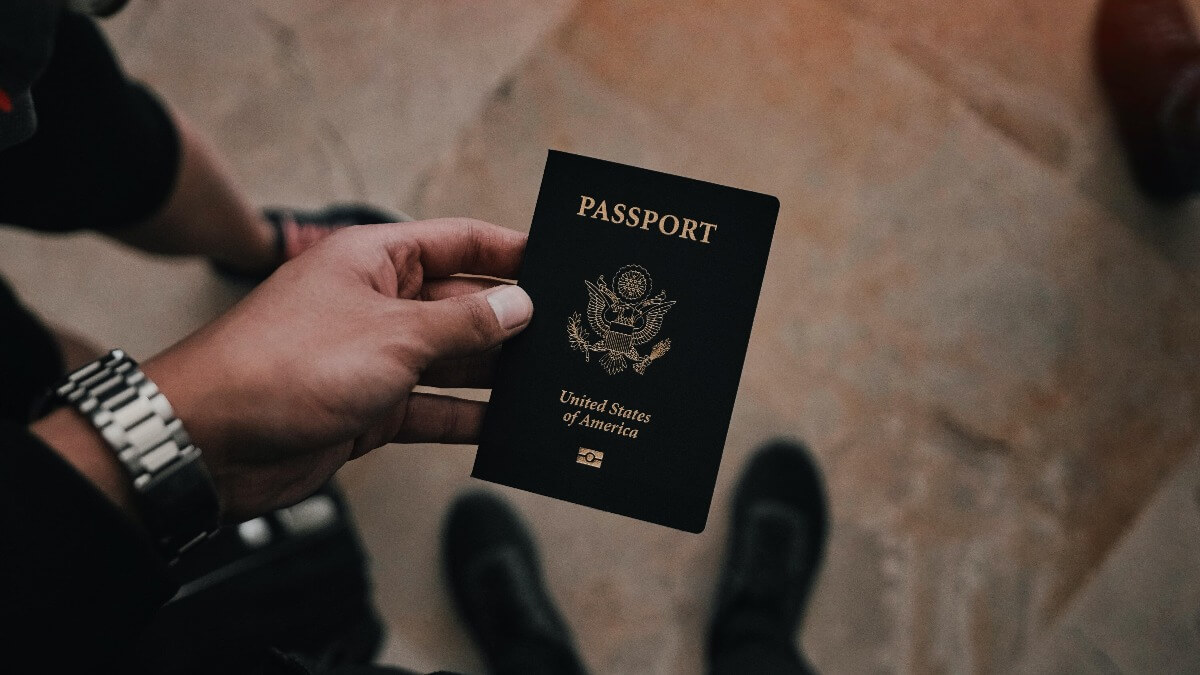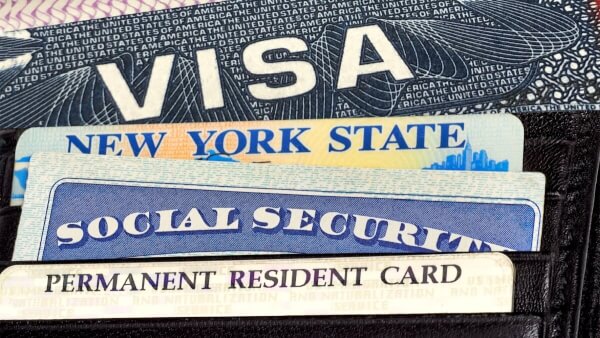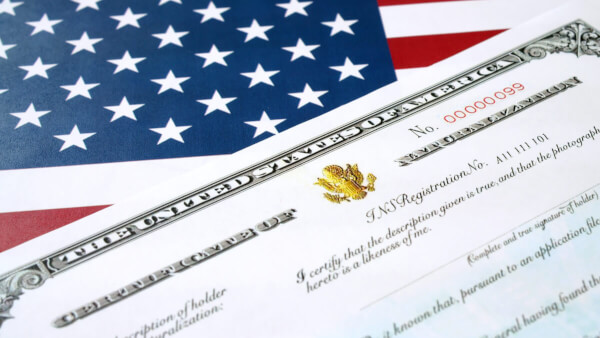Transferring your international driver's license to the US: step-by-step
Your full guide to updating your foreign driver's license to the US.

Reports suggest that higher than ever numbers of people are renouncing their US citizenship from abroad¹. This may be because of the expenses involved with filing taxes annually, and the need to declare all foreign assets as an American living abroad. If you hold dual nationality with another country, and are wondering how to renounce US citizenship, this guide is for you.
We’ll cover all you need to know about renouncing your US citizenship, as well as the cost to renounce US citizenship.
| 📑 Table of Contents |
|---|
To help you pay your filing fees and taxes from abroad for less, check out Wise and the Wise Multi-currency Account. More on how to save money with Wise, coming up later.
There are a few reasons why you might choose to formally renounce your US citizenship. These can include:
|
|---|
It’s worth stating up front that renouncing your US citizenship isn’t a fast, cheap or straight forward process. Also, if you renounce your US citizenship and are not a national of another country, you could be left stateless which has severe consequences². Before you make any decisions about renouncing your US citizenship, you’ll want to take legal advice and check out all the details as they may apply to your specific situation.
OK, on to the key question — how do you renounce your US citizenship, and how long does it take to renounce US citizenship?
To renounce your US citizenship you’re required to appear in person in front of an embassy or consular official, and sign an oath of renunciation³. This process is managed locally by US embassies and consulates all around the world, and as such the exact process may vary from place to place.
As an example, let’s look at the process if you’re applying from Australia to renounce your US citizenship⁴:
1. Email the Consulate General serving your location with a full set of your personal details, scanned copies of your US ID documents, and a reason for your decision
2. Assuming all the required information is included, you’ll be contacted in 10 - 15 business days to schedule an appointment to attend the Consulate in person
3. Attend the appointment to complete your oath of renunciation and confirm your understanding of the process. You’ll also need to pay a fee at this stage
4. Your documents are sent to the US for consideration, which can take 3 - 6 months
5. You’ll be notified of the outcome by the Consulate once a decision is made
Prior to your meeting at your local consular service, you’ll want to read through and get familiar with the paperwork you’ll need to complete on the day. The documents you need are Form DS-4080⁵ and Form DS-4081⁶. The first document is the oath you make confirming you are voluntarily renouncing all the rights and privileges of being a US citizen. The second document is to show that you understand the full legal and practical ramifications of relinquishing your nationality in this way.
In most cases you can not get US citizenship back once you have renounced it.
The most common exception is if you lost your citizenship as a child — including people who lost citizenship due to completing foreign military service while under the age of 18. In this case you can apply to get your US citizenship reinstated within six months after turning 18³.
You can not usually renounce your US citizenship from within the US⁷. In fact, as soon as you renounce your citizenship formally you will need permission from the US government to even be present in the US — either in the form of a visa or a visa waiver. The only exception here is if the US is in a state of war — in this case it may be possible to renounce your citizenship within the US if this is approved by the authorities.
You’ll normally only be able to renounce your US citizenship while you’re abroad — this can be done at your closest US embassy or consulate.
You’ll hear the process of losing your US citizenship described variously as renouncing and relinquishing your nationality. Surrendering your US citizenship is also commonly used — but not a formal description of the process.
There are actually differences in the meaning of renouncing and relinquishing citizenship in this way — here’s a basic breakdown.
| Renouncing | Relinquishing |
|---|---|
| Voluntarily and with intention renounce your citizenship in front of a US representative at a consulate or embassy abroad | Commit an act which causes you to automatically lose your US citizenship - renouncing your citizenship is a from of relinquishing citizenship, but there are also other relinquishing acts such as holding public office in a foreign country or fighting against the US with a foreign military |
|
|---|
Renouncing your citizenship does not change whether or not you can be extradited to the US, or whether or not US law and taxation will apply to your case. In fact, as we will discuss later, you may be subject to extra taxes when you end your US citizenship.
Once you renounce your citizenship, if your country of residence deports you, you will no longer be automatically able to return to the US. Becoming stateless can also cause severe hardship — you won’t be able to get a passport, which can mean you are unable to travel or access basic services.
Renouncing your US citizenship is usually a final act — it can’t later be undone. That means it’s especially important to understand the implications of completing this process, and taking all legal advice you might need in advance.
If you’re renouncing your US citizenship, you’ll need to confirm your tax obligations with the IRS.
While the renunciation process is separate from the tax filing and you would be able to renounce citizenship without having first filed your tax returns and paid any due taxes, renouncing US citizenship without being in compliance with the prior 5 years of tax obligation would make you a covered expatriate — and you could also be charged an exit tax if you fulfill certain criteria.
The exit tax is determined according to whether you are a covered expatriate, this means that you are listed into one of the following when leaving the US:
In case you qualify into the covered expatriate categories laid out above, you need to understand that tax is computed the following way:
Pensions will be taxed from the very beginning, at marginal rates.
If you are a covered expatriate, a deemed disposition of all your assets would take place on the day before the renunciation appointment at the consulate. It wouldn’t be an actual sale, rather it would be a hypothetical sale on which capital gains tax might be owing.
The first 600,000 USD of capital gains would be exempt, according to section §877A(a)(3) — this amount is adjusted for inflation early, and for 2021 the exemption is applied to sales under 744,000 USD.
Calculating the exit taxes and consequences of renouncing US citizenship will vary according to individual circumstances.
Book a free 20 minute call with 1040 Abroad to find out what applies to your personal situation. You just need to fill in their contact form on the home page — they’ll get back to you within 24h.
You’ll have to pay a filing fee at your local consulate when you renounce US citizenship. This cost is in addition to any outstanding taxes, and exit tax if you’re deemed to be a covered expatriate. Here’s the lowdown:
- Filing fee - 2,350 USD⁹
- Exit tax - expect to pay at least 20% of the value of your property¹⁰
For exit tax, the IRS will treat it as though all property owned is sold at a fair market rate on the day before you renounce citizenship. You’re taxed on this deemed sale to the full extent of the law. That will mean paying any capital gains taxes which would apply in this situation — at the time of writing this will be at least 20% based on Federal capital gains tax rates.
If you love to travel, live abroad or have to manage income and outgoings across different currencies, you need Wise.
|
|---|
Renouncing your US citizenship isn’t easy — you’ll need to follow a formal process and pay both fees and taxes. It’s also not something to take lightly — usually once you renounce your citizenship there’s no going back.
If you have to renounce your right to US citizenship then start with this guide, take legal advice, and make sure you fully understand the procedures and implications for the long term.
Sources:
Sources checked on 08.21.2021
*Please see terms of use and product availability for your region or visit Wise fees and pricing for the most up to date pricing and fee information.
This publication is provided for general information purposes and does not constitute legal, tax or other professional advice from Wise Payments Limited or its subsidiaries and its affiliates, and it is not intended as a substitute for obtaining advice from a financial advisor or any other professional.
We make no representations, warranties or guarantees, whether expressed or implied, that the content in the publication is accurate, complete or up to date.

Your full guide to updating your foreign driver's license to the US.

Whatever your reason is for moving to the US, this guide aims to help you figure out the most important costs you'll face when you live there.

Find all you need to know about getting a personal loan for H-1B visa holders in this guide.

Everything you need to know about the US certificate of naturalization.

The US welcomes large numbers of new arrivals every year — and getting a great job to both gain experience and set down roots is a core part of the American...

Find everything you need to know about the US citizenship test, including the USCIS questions and answers.